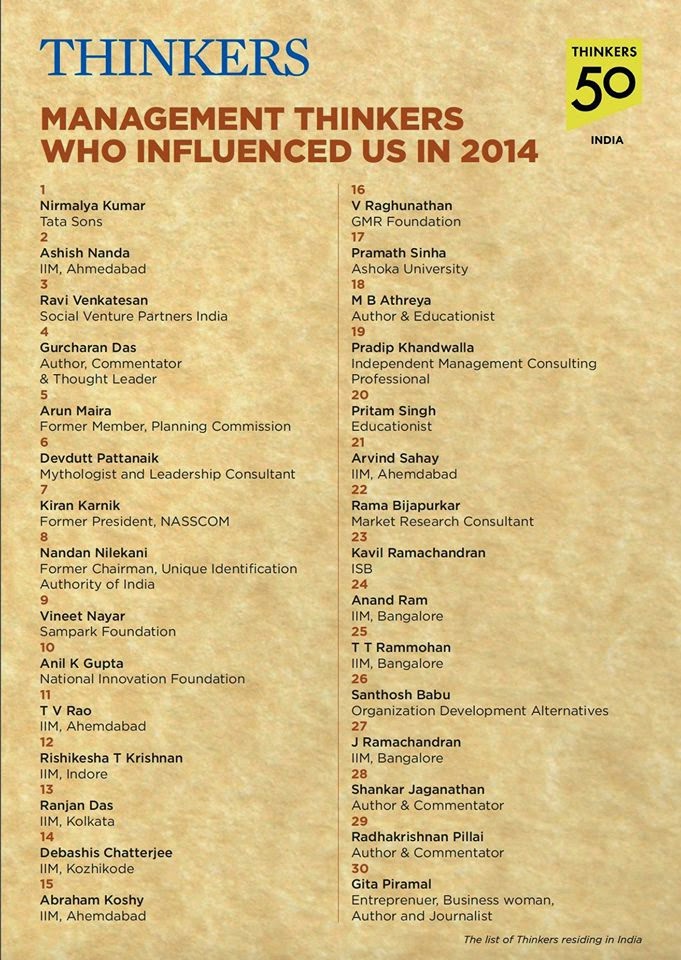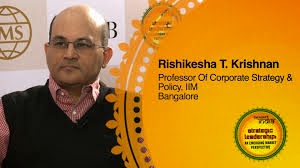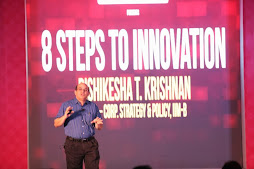While we usually focus on product, process and business model innovation as the main facets of innovation, some of the most impactful innovation can be the result of new organizational forms.
Take the case of India's white revolution. This was driven by a unique 3-tier structure of organizations - the farmers' cooperative at the village level as the basic organizational unit; a district-level federation of cooperatives with milk processing and marketing capabilities; and a state level apex body with brand and product management capabilities. And, behind this structure were larger organizations like the National Dairy Development Board at the national level that channelizes resources, support long-term investment activities, and accesses new knowledge and inputs. This arrangement takes advantage of flexibility - when required NDDB can look like an extension of the government, when required it is an independent body working with farmers' cooperatives. This flexibility has helped it manage in a complex environment.
Last week saw the birth of some organizations nowhere as complex as the milk production structure, but with the potential to have major impact.
B.PAC
NR Narayana Murthy launched the Bangalore Political Action Committee or B.PAC as it is being called. This is the first time we are seeing an organization christened as a PAC in India, though this is a common term in the US. I presume this similarity is not just a matter of coincidence. PACs in the US are not political parties, but organizations created to advocate and support a particular agenda. The B.PAC has similar objectives. At one level it aims to restore the quality of life of the city of Bangalore. But at another level it is a pressure group for more political power to cities which are the value creation engines of a modern economy.
The B.PAC's initial agenda is to enhance urban (read middle class, educated) voter enrolment and voter participation. They also promise to support candidates who back their agenda (new forms of city government, more resources, better urban planning, etc.) In the forthcoming assembly, parliament and municipal corporation elections. Subject, of course, to their meeting other criteria like no criminal cases against them, no record of corruption, etc.
B.PAC has been formed by a group of resourceful and successful individuals who have for long been expressing their dissatisfaction with the state of affairs like Kiran Mazumdar Shaw and Mohandas Pai. It represents their response to many of the issues they have raised in the past falling on deaf ears, and their inability to have a sustained impact on the political system.
Of course, the "involvement" of successful industrialists in efforts to improve Bangalore is not new. During the chief ministership of SM Krishna (1999-2004), the Bangalore Agenda Task Force was created under the chairmanship of Nandan Nilekani. The BATF tried to play the role of a coordinating body, creating a platform for different civic agencies, citizen groups and the state government to come together. While the BATF did manage to do some of this as well as have new bus shelters and toilets built, it was a body without any political legitimacy and was hastily disbanded after the Congress lost the 2004 elections in the state.
Newspaper reports indicate the existence of a similar attempt in the last few years under the chairmanship of Rajeev Chandrashekar. However, this one has been low key, restricting its role to that of a think tank. But again the long term impact doesn't appear to be substantial.
B.PAC is an interesting development because it shows an inching of rich, successful "middle class" entrepreneurs towards electoral politics. Though apolitical in the sense that it is not a political party, B.PAC clearly has a political agenda. It represents a growing realization that technocratic approaches can't solve India's problems. It also suggests that the efforts to create alternate public spaces such as those tried out by Janagraha or the BATF itself could have only limited success. The creation of the B.PAC is a welcome development, for the next logical step will be immersion in electoral politics. I hope to see a party such as the German Green Party emerging out of this process with the ability to push urban issues at the national level.
iSPIRT
The second organizational innovation in the last week was the creation of iSPIRT - the Indian Software Product Industry Round Table. It came into the public view amidst controversy with a Times of India headline announcing it as a breakaway trade body from Nasscom. iSPIRT's spokesmen were quick to assert that the organisation is an industry round table (not a trade body), that it will not offer membership, and that the founders will continue to be part of Nassom (Disclosure: I am a part of the iSPIRT Founding Circle).
I am excited by the prospect of iSPIRT because of the new activities it is promoting. An important role it will play is to act as a market maker. India has lakhs of small and medium businesses. These businesses are important sources of employment and economic growth but they face a major challenge of maintaining their competitiveness. Information technology has the potential to enhance the efficiency of these businesses. However, these SMBs often lack the ability to evaluate vendor proposals. They are price-sensitive, and risk-averse as far as IT is concerned. Burnt by past experiences, they are wary of making fresh investments in IT.
Under its iSMB initiative, iSPIRT plans to bridge the gap between domestic software product vendors who have relevant solutions and SMB customers. ISMB will study different verticals, map needs, and certify products meeting the vertical's needs. Only product companies that have customer dispute resolution mechanisms in place will be accredited. Product companies will get feedback on where their solutions fall short of customer requirements. This initiative is designed to bridge the trust deficit that exists today between vendors and users.
ISMB will build on the positive experience of CIO Connect, an earlier effort to bring Indian product companies and large Indian corporate IT users together.
Both B.PAC and iSPIRT are Market-Makers
Though in theory markets provide the opportunity for sellers and buyers to come together, information asymmetry and high transaction costs can prevent markets from functioning efficiently. Initiatives like ISMB and CIO Connect help smoothen out these market imperfections.
B.PAC can also be seen as a market maker. A democratic system in which a whole chunk of voters does not participate will not reflect the needs of different interest groups accurately.
We tend to expect government to combat market failure. Both B.PAC and the ISMB initiative of iSPIRT represent voluntary, community efforts to do so. I will watch both these organizational initiatives with interest.
Take the case of India's white revolution. This was driven by a unique 3-tier structure of organizations - the farmers' cooperative at the village level as the basic organizational unit; a district-level federation of cooperatives with milk processing and marketing capabilities; and a state level apex body with brand and product management capabilities. And, behind this structure were larger organizations like the National Dairy Development Board at the national level that channelizes resources, support long-term investment activities, and accesses new knowledge and inputs. This arrangement takes advantage of flexibility - when required NDDB can look like an extension of the government, when required it is an independent body working with farmers' cooperatives. This flexibility has helped it manage in a complex environment.
Last week saw the birth of some organizations nowhere as complex as the milk production structure, but with the potential to have major impact.
B.PAC
NR Narayana Murthy launched the Bangalore Political Action Committee or B.PAC as it is being called. This is the first time we are seeing an organization christened as a PAC in India, though this is a common term in the US. I presume this similarity is not just a matter of coincidence. PACs in the US are not political parties, but organizations created to advocate and support a particular agenda. The B.PAC has similar objectives. At one level it aims to restore the quality of life of the city of Bangalore. But at another level it is a pressure group for more political power to cities which are the value creation engines of a modern economy.
The B.PAC's initial agenda is to enhance urban (read middle class, educated) voter enrolment and voter participation. They also promise to support candidates who back their agenda (new forms of city government, more resources, better urban planning, etc.) In the forthcoming assembly, parliament and municipal corporation elections. Subject, of course, to their meeting other criteria like no criminal cases against them, no record of corruption, etc.
B.PAC has been formed by a group of resourceful and successful individuals who have for long been expressing their dissatisfaction with the state of affairs like Kiran Mazumdar Shaw and Mohandas Pai. It represents their response to many of the issues they have raised in the past falling on deaf ears, and their inability to have a sustained impact on the political system.
Of course, the "involvement" of successful industrialists in efforts to improve Bangalore is not new. During the chief ministership of SM Krishna (1999-2004), the Bangalore Agenda Task Force was created under the chairmanship of Nandan Nilekani. The BATF tried to play the role of a coordinating body, creating a platform for different civic agencies, citizen groups and the state government to come together. While the BATF did manage to do some of this as well as have new bus shelters and toilets built, it was a body without any political legitimacy and was hastily disbanded after the Congress lost the 2004 elections in the state.
Newspaper reports indicate the existence of a similar attempt in the last few years under the chairmanship of Rajeev Chandrashekar. However, this one has been low key, restricting its role to that of a think tank. But again the long term impact doesn't appear to be substantial.
B.PAC is an interesting development because it shows an inching of rich, successful "middle class" entrepreneurs towards electoral politics. Though apolitical in the sense that it is not a political party, B.PAC clearly has a political agenda. It represents a growing realization that technocratic approaches can't solve India's problems. It also suggests that the efforts to create alternate public spaces such as those tried out by Janagraha or the BATF itself could have only limited success. The creation of the B.PAC is a welcome development, for the next logical step will be immersion in electoral politics. I hope to see a party such as the German Green Party emerging out of this process with the ability to push urban issues at the national level.
iSPIRT
The second organizational innovation in the last week was the creation of iSPIRT - the Indian Software Product Industry Round Table. It came into the public view amidst controversy with a Times of India headline announcing it as a breakaway trade body from Nasscom. iSPIRT's spokesmen were quick to assert that the organisation is an industry round table (not a trade body), that it will not offer membership, and that the founders will continue to be part of Nassom (Disclosure: I am a part of the iSPIRT Founding Circle).
I am excited by the prospect of iSPIRT because of the new activities it is promoting. An important role it will play is to act as a market maker. India has lakhs of small and medium businesses. These businesses are important sources of employment and economic growth but they face a major challenge of maintaining their competitiveness. Information technology has the potential to enhance the efficiency of these businesses. However, these SMBs often lack the ability to evaluate vendor proposals. They are price-sensitive, and risk-averse as far as IT is concerned. Burnt by past experiences, they are wary of making fresh investments in IT.
Under its iSMB initiative, iSPIRT plans to bridge the gap between domestic software product vendors who have relevant solutions and SMB customers. ISMB will study different verticals, map needs, and certify products meeting the vertical's needs. Only product companies that have customer dispute resolution mechanisms in place will be accredited. Product companies will get feedback on where their solutions fall short of customer requirements. This initiative is designed to bridge the trust deficit that exists today between vendors and users.
ISMB will build on the positive experience of CIO Connect, an earlier effort to bring Indian product companies and large Indian corporate IT users together.
Both B.PAC and iSPIRT are Market-Makers
Though in theory markets provide the opportunity for sellers and buyers to come together, information asymmetry and high transaction costs can prevent markets from functioning efficiently. Initiatives like ISMB and CIO Connect help smoothen out these market imperfections.
B.PAC can also be seen as a market maker. A democratic system in which a whole chunk of voters does not participate will not reflect the needs of different interest groups accurately.
We tend to expect government to combat market failure. Both B.PAC and the ISMB initiative of iSPIRT represent voluntary, community efforts to do so. I will watch both these organizational initiatives with interest.

















No comments:
Post a Comment